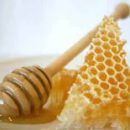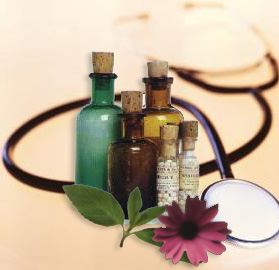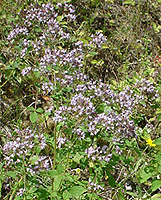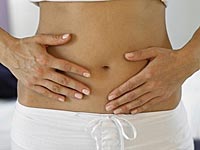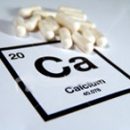The bee poison is a toxic substance that allocates the bee. The composition of the bee poison includes a variety of chemical elements, leafy-like, minerals, amino acids and proteins.
Content
Concept of bee poison
Hercid bees (workers bees and uterus) at the end of the abdomen is located a protection authority - a stressful apparatus, which consists of sting, two poisonous glands and a tank for poison.
Sticking pieces of sting have zabbins that impede the extraction of it from the skin. When helening the bee is thrown in the skin in the skin. Horror, the bee flies, and the sting, lingering in the skin, leaves together with the whole stress apparatus. Under the influence of the cutting muscles of the apparatus, the entire poison is gradually poured from the reservoir in the rink. A few hours after helening the bee dies.
Bee poison - apitoxin (from Greek «Apis» - Bee I «toxin» - poison) is a colorless transparent colloid liquid with a characteristic smell resembling the smell of honey, and bitter burning taste. Poison reaction acid, specific weight 1,131. The content of dry substances in the bee poison 41%.
The main components of the bee poison
The chemical composition of the bee poison is very complicated and finally not studied. Most researchers represent a bee poison as a complex complex of zip-like, mineral substances, amino acids and proteins.
The protein complex of the bee poison is divided into three main factions:
- Zero (F-0)
- Fraction 1 (F-1)
- Fraction 2 (F-2)
The zero fraction proteins are deprived of a poisonous action and are ballast substances of bee poison.
Fraction 1 has a toxic effect and is a high temperature-resistant protein called Melittin. Melittin - the main onset of the bee poison. Most of the changes occurring in the body when a mealing bee are due to the action of Melittin on the nervous system, muscles, blood and blood circulation.
In contact with blood, Melittin causes hemolysis (decay of red blood cells). Melittin expands blood vessels. In addition, it has a local irritant action, leading to the development of inflammatory reaction at the injection site. Melittin is resistant to the action of acids, alkalis, high and low temperatures.
Fraction 2 relatively low toxic, consists mainly of amino acids. In addition, this fraction contains two highly active enzymes - phospholipase A and hyaluronidase. The first enzyme breaks the lepticine, which is part of the cell shells, which can lead to damage to the cells, up to their full decay. Impacting erythrocytes, phospholipase (lecithinase) causes them to hemolysis. The second enzyme of this fraction - hyaluronidase - increases the permeability of blood vessels, causing the speed of suction of the poison when helening and enhancing his local action.
Fraction 2 oppresses one of the enzymes needed to coagulate blood - thrombocinase, resulting in reduced blood coagulation. Therefore, in large doses, the bee poison causes hemorrhage (hemorrhages) by internal organs.
Under the influence of high temperatures, the enzymes of the bee poison are destroyed. The feeling of burning in a mealing occurs under action on the body of active substances of acetylcholine and histamine, as well as inorganic acids (ant, salt, orthophosphorus).
The composition of the bee poison includes the following chemical elements:
- hydrogen
- carbon
- oxygen
- nitrogen
- potassium
- calcium
- iron
- magnesium
- phosphorus
- copper
- zinc
- sulfur
- manganese
- iodine
- chlorine
The complexity of the chemical composition of the bee poison determines the complexity of its action to the human body.
The bee poison is resistant to the action of acids and alkalis, to temperature fluctuations. Heating up to 100 ?C and freezing do not change its composition. However, when taking inside under the influence of digestive enzymes, the bee poison is destroyed. In the air, the poison dries quickly, but in a dry form retains its activity for a number of years.
The bee poison is a very strong disinfection substance: even in dilution 1: 50000, it retains sterility, completely does not contain microorganisms.
The mechanism of exposure to the bee poison on the body
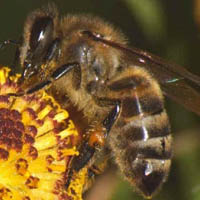 The effect of the bee poison on the human body is very difficult and largely depends on the number of population, localization of bites and the individual sensitivity of the body.
The effect of the bee poison on the human body is very difficult and largely depends on the number of population, localization of bites and the individual sensitivity of the body.
If you get into the body of large amounts of poison, along with a local reaction (the appearance of pain, burning, swelling and redness at the site of the seen) there is a common reaction.
In light cases, it can be expressed in ailment, increasing temperature, headaches, the appearance of uri type of urban. In more severe cases, vomiting, diarrhea, shortness of breath, lifestyle, pulse, drop in blood pressure, loss of consciousness, hemolysis of red blood cells, hemoglobin in urine, cramps,.
The sensitivity of people to the bee poison is different. The mechanism of the toxic effect of the bee poison on the body is complicated and is the result of the integrated effects of many components of the poison on various organs and systems.
In toxic doses, the poison causes the destruction of erythrocytes (hemolysis), which is associated with the effect on the erythrocytes of fraction 1 and phospholipase A fraction 2.
Due to the oppression of phospholipase of one of the enzymes needed for normal blood coagulation (thromboxinase), the bee poison lowers blood clotting, so there may be elevated bleeding and hemorrhage under the skin.
Swelling, swelling arising at the site of the snealing, and the drop in blood pressure is largely associated with the action on the blood vessels of the hyaluronidases of fractions 2, histamine, acetylcholine and melittin on the nervous system, as a result of which the permeability of capillaries is sharply increased and blood pressure drops.
The general toxic effect of the bee poison is carried out mainly due to fraction 1 and more by mellittin, possessing versatile and properties, the main one of which is neurotoxic effect.
There is a very big difference between the toxic and therapeutic doses of the bee poison, which makes it possible to widely vary the medicinal dose for each particular patient.


